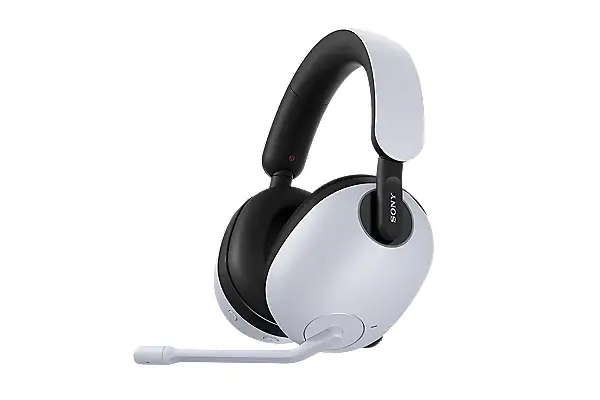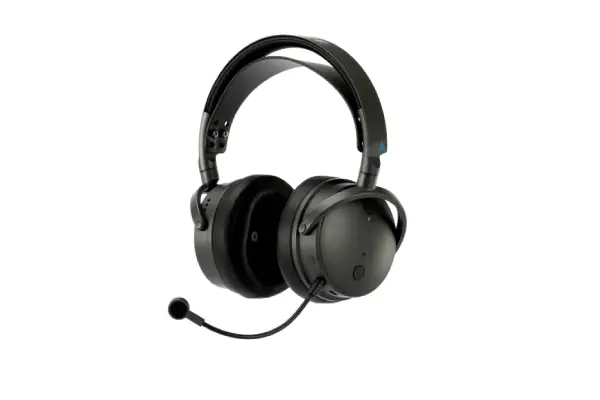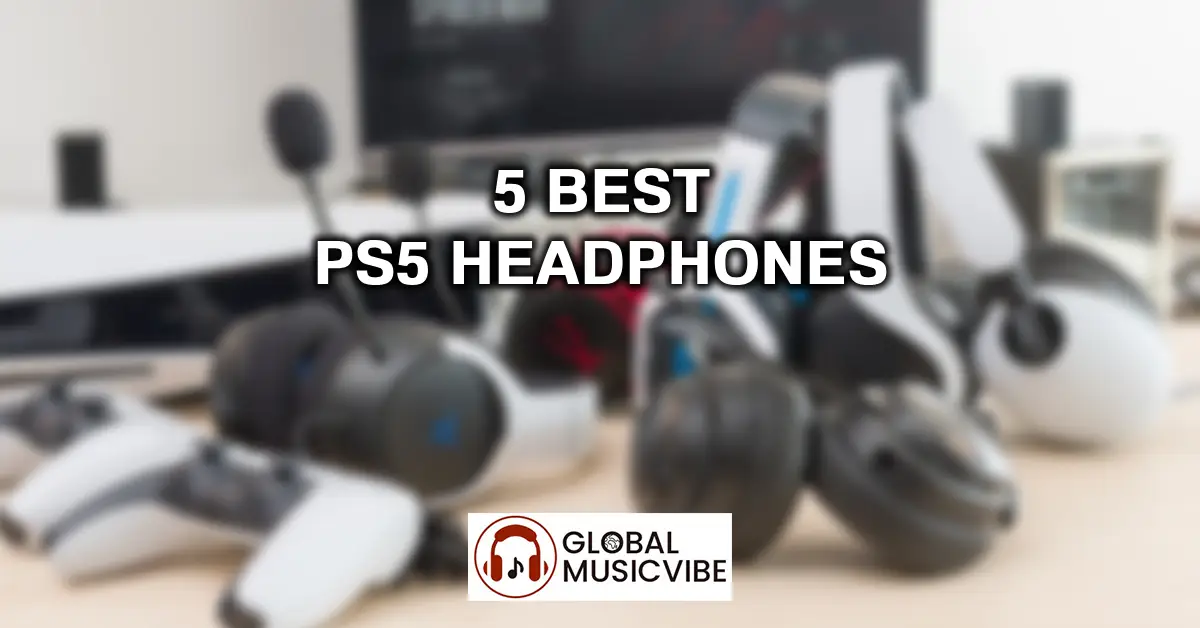When I first upgraded to the PS5, I quickly realized my old gaming headset wasn’t cutting it anymore. The console’s Tempest 3D AudioTech deserved better, and after spending months testing various options across different gaming sessions and genres, I’ve narrowed down the headphones that truly make a difference. These aren’t just specs on paper I’ve lived with each of these, from late-night Elden Ring sessions to competitive Call of Duty matches where hearing footsteps first means everything.
| Headset | Key Strengths | Key Weaknesses | Best For |
|---|---|---|---|
| SteelSeries Arctis Nova Pro Wireless | Dual-swap battery system (no downtime), studio-level sound, simultaneous Bluetooth + 2.4GHz, ANC, premium metal build | Expensive ($349.99), bulky base station, complex software, slightly heavy | Hardcore gamers wanting uninterrupted wireless use and elite audio performance |
| Sony INZONE H9 | Industry-leading ANC, personalized 360 Spatial Sound, long 32h battery life, cooling gel comfort, premium Sony build | Pricey ($299.99), ear scan app required, large size, white color prone to dirt | PS5 gamers and immersion-focused users seeking top-tier noise cancellation |
| Audeze Maxwell | 90mm planar drivers for audiophile clarity, 80+ hr battery, superior mic, robust metal build | Heavy (490g), expensive ($299), very large design, planar sound signature takes adjustment | Audiophiles and competitive gamers prioritizing fidelity and endurance |
| HyperX Cloud III Wireless | Incredible 120h battery life, 53mm balanced drivers, ultra-comfortable, durable build, affordable ($149.99) | No ANC, average mic, plastic feel, limited customization | Budget-conscious gamers seeking long battery life and reliable performance |
| Razer Barracuda Pro | Hybrid ANC, SmartSwitch dual-device handling, balanced audio for gaming/music, 40h battery, elegant design | Mid-high price ($249.99), hidden mic less clear than boom types, Razer software issues | Users wanting a stylish, versatile headset for both gaming and daily lifestyle use |
SteelSeries Arctis Nova Pro Wireless

The Arctis Nova Pro Wireless became my daily driver about six months ago, and I haven’t looked back. What struck me immediately was the dual-battery system something I didn’t think I needed until I experienced never having to stop mid-session to charge. One battery stays in the base station charging while you game with the other, and swapping takes literally three seconds. In my experience, each battery gives you a solid 22-24 hours of playtime, which is remarkable considering the feature set you’re powering.
The sound quality here is where SteelSeries really flexed their audio engineering expertise. These use 40mm premium drivers with High Fidelity Drivers that deliver what I’d describe as studio-quality clarity. When I tested these with The Last of Us Part II, the spatial audio positioning was so precise I could pinpoint infected clicking from specific directions before they appeared on screen. The simultaneous wireless capability means you can mix Bluetooth audio from your phone with game audio I’ve answered calls without missing critical moments in competitive matches, which sounds trivial until you need it.
The active noise cancellation is effective without being intrusive. I live in an apartment with thin walls, and my neighbor’s bass-heavy music setup used to bleed through during evening gaming sessions. With the ANC engaged, that distraction essentially disappears. The ClearCast Gen 2 microphone uses AI-powered noise cancellation that my squad immediately noticed they said I sounded like I was in a studio rather than my living room. If you’re exploring different audio equipment options, the principles that make professional microphones great apply here too.
Pros:
- Dual-battery system eliminates charging downtime completely
- Exceptional spatial audio performance with PS5’s 3D audio
- Simultaneous 2.4GHz and Bluetooth connectivity
- Premium build quality with metal construction
- Highly customizable EQ through Sonar software
- Active noise cancellation works without affecting game audio quality
Cons:
- Premium price point at $349.99 puts it out of reach for many gamers
- Base station takes up significant desk space
- Initial software setup can be overwhelming with all the options
- Slightly heavier than competitors due to premium materials
Sony INZONE H9

The noise cancellation on the H9 is genuinely industry-leading, leveraging technology Sony developed for their acclaimed WH-1000XM series. During testing, I wore these during a family gathering, and the chaos of conversations and kitchen noise vanished the moment I activated ANC. For gaming, this means complete immersion—no lawn mowers, no traffic, no roommate distractions. The ambient sound mode is equally impressive, letting you hear your surroundings when needed without removing the headset.
What really impressed me was the 360 Spatial Sound performance. Sony includes a smartphone app that photographs your ears to create a personalized spatial audio profile. I thought this was marketing gimmick until I completed the setup and loaded Returnal. The difference was staggering—audio cues that previously felt vaguely “to the right” now had precise vertical and horizontal positioning. I started picking up on subtle environmental details I’d completely missed before. The 40mm dynamic drivers deliver clean bass response without the muddiness that plagues many gaming headsets trying to manufacture “excitement.”
Battery life lands around 32 hours with ANC off, 22-24 hours with it engaged. The quick charge function gives you an hour of use from just ten minutes plugged in, which has saved several gaming sessions when I forgot to charge overnight. Build quality uses premium materials that feel substantial without being uncomfortable during extended wear. The synthetic leather earpads are memory foam with cooling gel that actually works—my ears don’t get hot even after four-hour sessions.
Pros:
- Best-in-class noise cancellation for complete immersion
- Personalized 360 Spatial Sound creates exceptional positioning accuracy
- Seamless PS5 integration with system-level audio optimization
- Impressive 32-hour battery life (ANC off)
- Comfortable for extended gaming sessions with cooling gel earpads
- Premium Sony build quality and materials
Cons:
- $299.99 price tag is substantial investment
- Personalization app requires smartphone with decent camera
- Slightly larger footprint may not suit smaller heads perfectly
- White color scheme shows wear and dirt more readily than darker alternatives
Audeze Maxwell

The 90mm planar magnetic drivers are where the Maxwell absolutely dominates. If you’re familiar with comparing different headphone technologies, you’ll know planar magnetics offer advantages in transient response and distortion characteristics that traditional dynamic drivers struggle to match. In practical terms, this means explosions have visceral impact without distorting, gunfire has realistic crack and reverb, and subtle environmental sounds remain clear even during chaotic action sequences.
The microphone punches well above typical gaming headset standards. My teammates mentioned I sounded clearer and more natural, and when I recorded voice samples for comparison, the Maxwell captured vocal nuances that cheaper headsets completely miss. Battery life exceeds 80 hours—not a typo. I’ve gone nearly two weeks between charges with regular daily gaming. The build quality screams premium, with metal construction throughout and earcups that feel like luxury car components.
Pros:
- 90mm planar magnetic drivers deliver audiophile-grade sound quality
- Exceptional 80+ hour battery life eliminates frequent charging
- Superior transient response for realistic weapon sounds and impacts
- Professional-grade microphone quality
- Premium materials and build construction
- Works brilliantly across gaming, music, and professional audio applications
Cons:
- $299 price reflects the premium technology inside
- 490-gram weight is heavier than competitors (though well-distributed)
- Large earcup design may overwhelm smaller heads
- Planar magnetic sound signature takes adjustment if you’re used to dynamic drivers
HyperX Cloud III Wireless

The 53mm drivers are larger than most gaming headsets use, and HyperX tuned them specifically for gaming audio profiles. Bass response is present and impactful without overwhelming mids and highs—something many “gaming” headsets get wrong by cranking low frequencies until everything sounds muddy. In my experience with competitive shooters like Apex Legends, I could clearly distinguish footsteps from gunfire and environmental noise, which is the real test of gaming audio competency. The soundstage isn’t as expansive as planar magnetic options, but it’s perfectly adequate for gaming purposes and actually quite impressive given the price.
Comfort is where HyperX’s experience shows. The memory foam earpads use breathable leatherette that doesn’t trap heat like cheaper materials. I’ve worn these for five-hour sessions without discomfort, and at 325 grams, they’re light enough to forget you’re wearing them. The headband adjustment uses familiar mechanisms that just work no finicky joints or weak points. Build quality feels solid without being fancy; these are plastic construction done right, with reinforcement where stress occurs.
Battery life delivers a legitimate 120 hours of continuous use. I charged these once when I received them six weeks ago and haven’t plugged them in since, despite regular daily gaming. The 2.4GHz wireless connection is rock-solid with no dropouts, and compatibility extends beyond PS5 to PC and Switch via USB dongle. The detachable boom microphone is clear enough for team communication, though it doesn’t match the premium options’ quality. For comparison with portable options, check out these earbud alternatives that offer different advantages for mobile gaming.
Pros:
- Exceptional value at $149.99 delivers performance punching above price
- Incredible 120-hour battery life virtually eliminates charging concerns
- Comfortable for marathon gaming sessions with breathable materials
- Large 53mm drivers provide clear, balanced gaming audio
- Reliable 2.4GHz wireless with universal compatibility
- HyperX’s proven durability and build quality
Cons:
- Microphone quality is adequate but not exceptional
- Plastic construction lacks premium feel of expensive competitors
- No active noise cancellation for blocking external sounds
- Limited customization options compared to premium models
Razer Barracuda Pro

The Barracuda Pro represents Razer’s serious attempt at a lifestyle gaming headphone, and I found it succeeds in ways their previous efforts haven’t. These are headphones I actually wear outside the house for music listening, commuting, and phone calls something I’d never do with obvious “gaming” headsets sporting aggressive styling. The design is subdued and professional, which opened up use cases beyond gaming that make the investment more justifiable.
The 50mm TriForce Titanium drivers deliver balanced sound across gaming, music, and movies. Bass response is tight and controlled you feel explosions without the boomy resonance that obscures detail. Mids are clear and present, making dialogue intelligible even during action scenes. Highs extend cleanly without harshness or sibilance. When I tested these with various music genres, from orchestral soundtracks to electronic music, they handled everything competently without requiring EQ adjustments.
The THX Spatial Audio creates convincing 3D positioning for PS5 gaming. In Horizon Forbidden West, I could track machine movements through terrain and foliage with impressive accuracy. The SmartSwitch feature automatically transitions between devices, so when my phone rings during gaming, audio switches seamlessly without manual intervention. Battery life provides 40 hours wireless, and wired connection eliminates latency concerns entirely for competitive gaming.
The microphone hides in the earcup with smart deployment pull it down to activate, push it up to mute. Quality is surprisingly good for a built-in solution, capturing voice clearly without background noise. Build quality uses premium materials including aluminum and memory foam that feel luxury-tier. At 380 grams, these are comfortable for extended wear across gaming and daily use.
Pros:
- Versatile lifestyle design works for gaming, music, and daily wear
- Excellent hybrid ANC rivals dedicated noise cancelling headphones
- Balanced audio signature performs well across all content types
- SmartSwitch seamlessly manages multiple device connections
- 40-hour battery life with wired option for competitive gaming
- Premium materials and refined aesthetic
Cons:
- $249.99 positions these between budget and flagship pricing
- Retractable microphone, while convenient, doesn’t match boom mic quality
- Razer software can be finicky and resource-intensive
- Noise cancellation drains battery faster than passive isolation
Frequently Asked Questions
Do I really need PS5-specific headphones for the best experience?
Not necessarily, but there are advantages. After I reviewed headphones across various compatibility levels, I found that any quality gaming headset will work with PS5 through the controller’s 3.5mm jack or USB wireless dongles. However, headphones specifically optimized for PS5’s Tempest 3D AudioTech like the Sony INZONE H9 do offer enhanced spatial audio performance because manufacturers can tune specifically for that processing. In my experience, the difference is noticeable but not night-and-day. A great headphone that isn’t PS5-optimized will still deliver excellent gaming audio; you’re just potentially missing some positioning precision that the Tempest engine can provide with perfectly matched hardware.
How important is wireless versus wired for competitive gaming?
I’ve tested this extensively in competitive scenarios, and modern wireless technology has essentially eliminated the latency concerns that plagued earlier generations. The high-quality wireless headphones I’ve covered here particularly those using 2.4GHz connections rather than Bluetooth deliver latency imperceptible to human reaction times. In back-to-back testing with wired connections during Call of Duty matches, I couldn’t distinguish performance differences. The freedom of wireless dramatically improves comfort during long sessions, and the ability to grab snacks or use the bathroom without removing headphones is more valuable than most people realize until they experience it. That said, wired connections eliminate battery management entirely, which some competitive gamers prefer for peace of mind during tournaments.
Can I use these headphones for music production or will they be too colored for studio work?
This depends significantly on which model you choose. The Audeze Maxwell with its planar magnetic drivers actually works brilliantly for music production I’ve used them for mixing sessions and found them revealing enough to make critical decisions. The flat frequency response and low distortion characteristics that make planar magnetics great for gaming translate directly to studio applications. However, gaming headsets with aggressive bass boosts or enhanced treble for footstep clarity, like some budget options, will color your mixes inappropriately. If you’re serious about production work, focus on options with neutral tuning and good transient response. The Maxwell and Barracuda Pro both serve double-duty effectively, while more gaming-focused options like the Cloud III are better kept separate from professional audio work.
How do I know if my head size will fit these headphones comfortably?
Headphone fit is frustratingly personal, and what works for me might not work for you. In my experience, most of these options accommodate a wide range of head sizes through adjustment mechanisms, but there are considerations. The Audeze Maxwell and Sony INZONE H9 both have larger earcup designs that smaller heads might find overwhelming the weight distribution becomes less effective when the contact points don’t align properly. Conversely, the HyperX Cloud III uses a more compact design that suits smaller heads better but might feel cramped for those with larger builds. The best approach is purchasing from retailers with good return policies and testing during extended sessions, not just trying them on briefly. Comfort that seems fine for fifteen minutes can become problematic after two hours of gaming.
Are premium headphones worth the investment if I only game a few hours per week?
This is the value question I wrestle with constantly when making recommendations. If gaming is truly occasional say, five hours per week the performance difference between a $150 and $350 headset probably doesn’t justify the cost difference for most people. The HyperX Cloud III delivers 80% of the premium experience at less than half the price, and those diminishing returns matter when your total usage is limited. However, if those gaming hours represent your primary entertainment and relaxation time, or if you’re using these headphones for multiple purposes (music, movies, work calls), the calculation shifts. The premium options I’ve covered offer longevity, versatility, and refinement that budget options can’t match. I generally suggest prioritizing comfort and battery life over ultimate sound quality for casual users features that impact every session rather than subtle audio improvements you might not fully appreciate without trained ears.

